Designing a service that can motivate people to use the bike regularly?
A service design project for Cycleurope.
ROLE
This school project was made of a group of 4 UX designers. My main tasks was UX/UI Design, UX Research, Interviewer, Facilitating Workshop.
GOAL
Develop a concept in a user-centered design process. The solution should bridge obstacles (pain-points) that are important for the consumer to become one satisfied cyclist.
DURATION
7 weeks
The challenge
Understanding the target group
We needed to understand how our target group – young, high-income earners living in the central parts of Gothenburg – who want to become cyclists approach the solution to their needs and then land in a service or product. Through our research we conducted surveys, interviews, observations, bodystorming and workshops.
The concept
How might we make it safer for people to use the bike in Gothenburg city?
We landed in a service that offers bicycle service on site that performs minor emergency services. We designed the concept in such a way that private individuals, with bike as hobby, signs up to be the bicycle service technicians (we call them bicycle ambassadors). The concept will in that way be similar to Uber.
To be able to target this concept, we developed a service roadmap – a customer service plan and how it will evolve over time.
Scroll down to see the process!

UNDERSTANDING
the target group
Secondary research
After googling bicycles, general cycling, bicycle culture, bicycle technology, etc we discovered that there’s already a lot of products and services connected to bicycle culture and a great deal of commitment among both private individuals and politicians in the city.
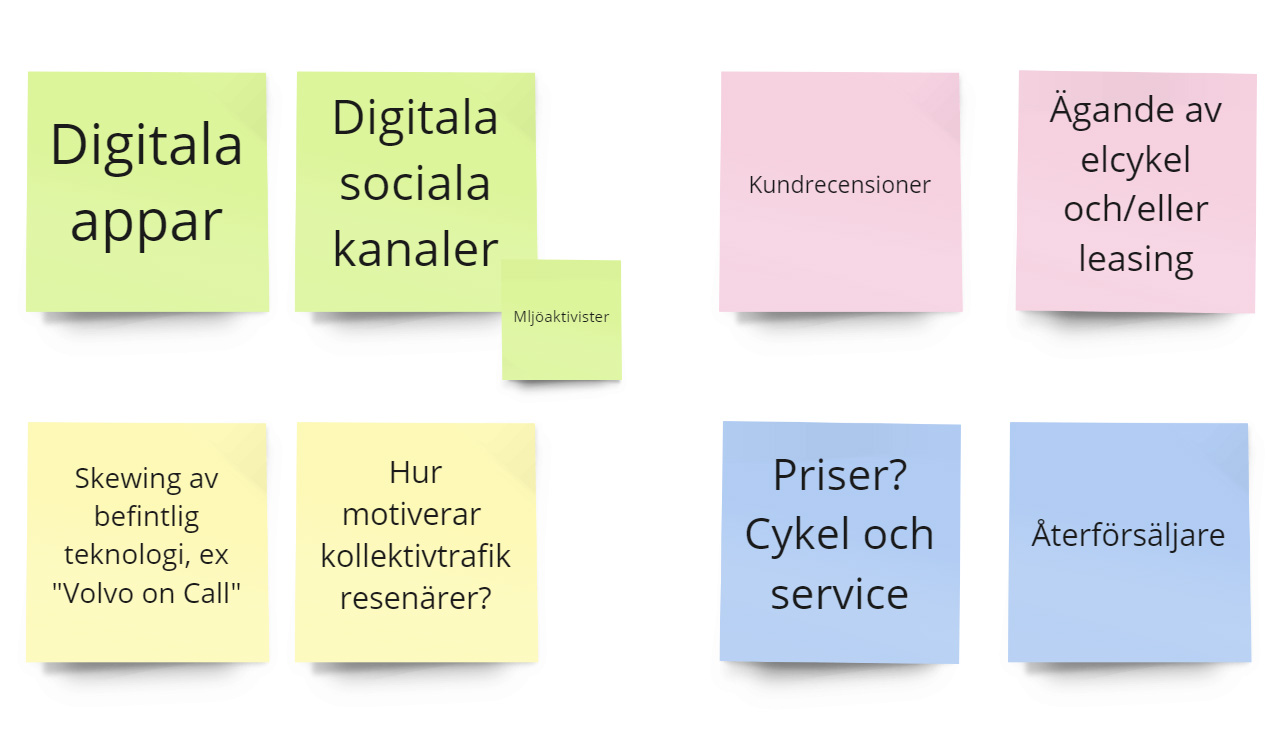
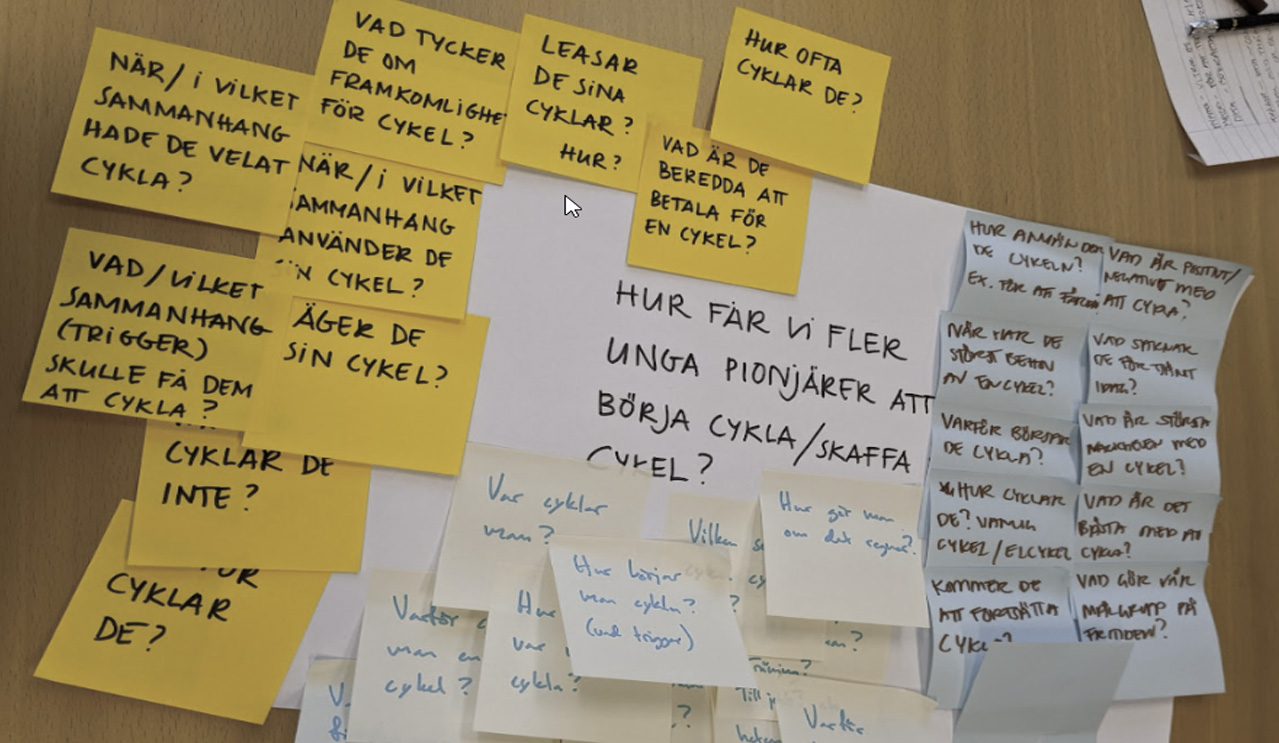
Hypotheses
We wrote down a number of questions and ranked them according to how important or interesting they were. From these questions we created hypotheses. As a next step we made some short street interviews with people we met in town. We asked questions to validate or reject our hypotheses.
Surveys
Based on our hypotheses and the answers from the quick interviews, we created two surveys which was shared in various social media. Insights from surveys where that the primary reason, why our target group both starts and continues to cycle, is accessibility. But half of the respondents, in our target group, who are cyclists also believe that bad roads and infrastructure are the biggest challenges.
Observations
Because of the poor cycle paths and lack of safety were consistently highlighted as problem areas through our surveys, we needed to understand the target group and other cyclists on the cycle paths. So we put ourselves in their situation by cycling around central Gothenburg during rush hour. This confirmed our results from the research.

Interviews
To gain further understanding, of our findings, we wanted to talk to the cyclists. We had a hard time finding people who filled every criteria of our target group but made a couple of deep interviews with people who has experience of cycling in central Gothenburg.
” The bike is just in time”
“I love the activity of cycling, but do not like when
there are a lot of obstacles in the way!”
“Social modeling has the greatest effect of all
– to be your own influencer!”
Based on our research we discovered the following painpoints:
Lack of safety (58%) on the roads. You are very exposed as a cyclist.
Planning (28%), mainly current circumstances regarding weather, road works or other obstacles that affect how you get around by bike.
Lack of motivation (13%) to use the bike on a daily basis.
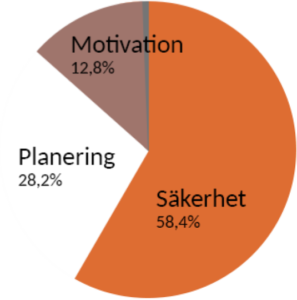
Key insights
- Cyclists want to feel safe on the roads
- It has a great effect when people help each other
Problems and obstacles on the cycle paths was such a pervasive topic throughout our research. We created a How Might We-question, based on our findings and explored different solutions to solve these issues in a digital workshop.
THE CONCEPT
a bicycle service on-demand
Due to our findings and HMW-question, we landed in a solution that offers bicycle service on site, that performs emergency service that shouldn’t take more than 15 minutes to complete. To motivate people to use the bike and feel safer on the road, we designed the concept in such a way that private individuals, with bicycles for a hobby, signs up to be the bicycle service technicians (we call them bicycle ambassadors). They help bikers in need, and at the same time earns some extra money. The concept will thus be similar to Uber.
Based on interviews with bicycle service stores, simpler services can be performed on the roadside, and where relevant tools can fit into a backpack, such as:
- Breaks
- Puncture
- Switches
- Chains

Stakeholder map
Based on our research and insights we created a Stakeholder Map to lay out all the stakeholders of the service concept.

Stakeholder map
To understand the gains and what pain killers this service concetp could create we used a Value Proposition Canvas.
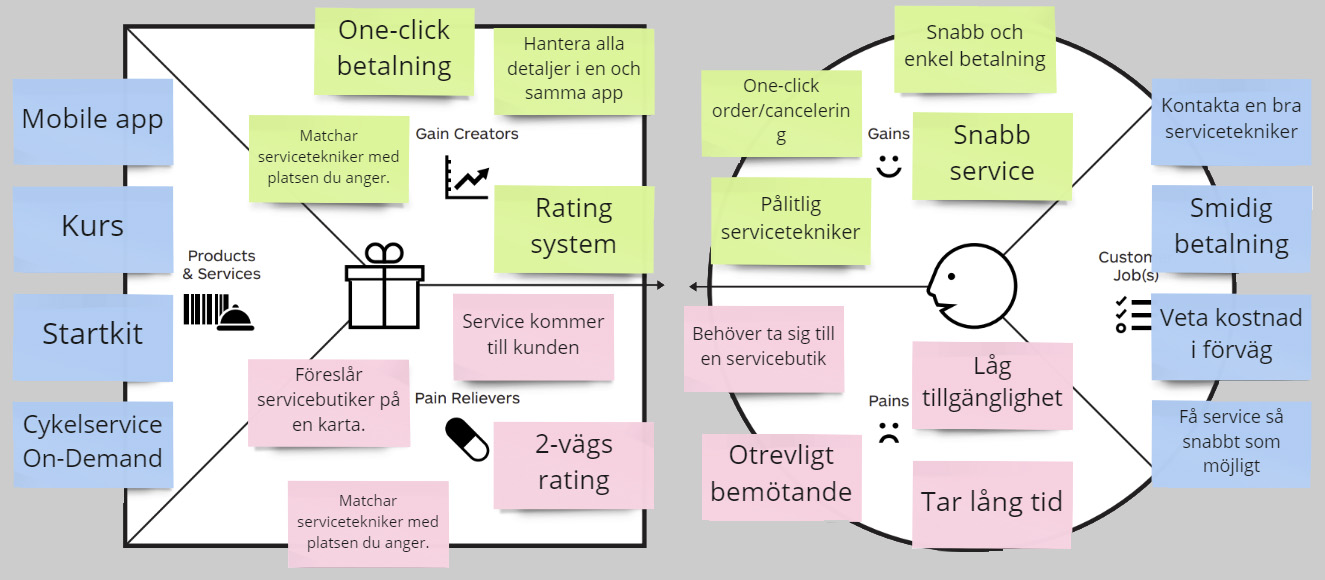
Customer journey
During our research we found that there is a similar concept already established in Stockholm and London (Mioo) where we got a lot of inspiration. But our concept differs slightly as we want to add a start-up course and a start-up kit with tools for the bicycle ambassadors, so that we can guarantee the best possible service to our customers.
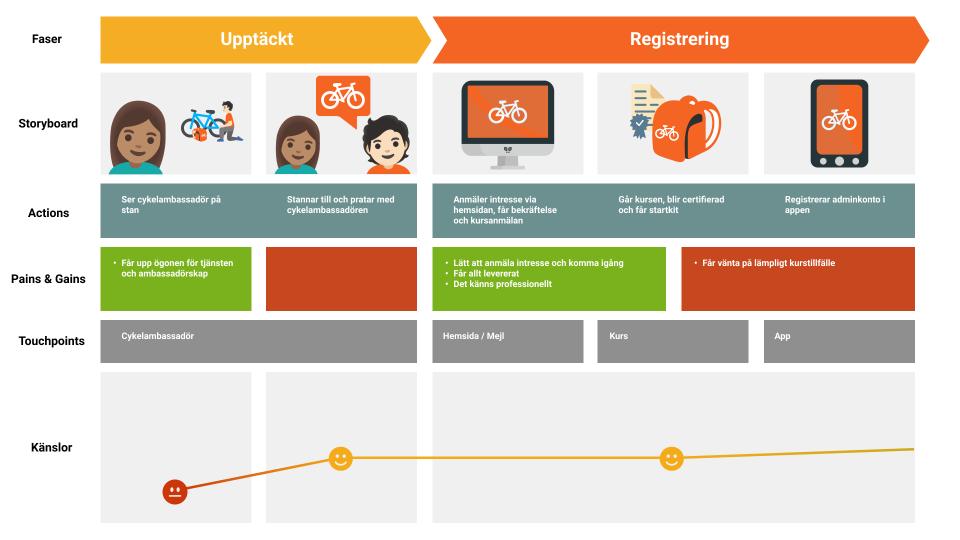
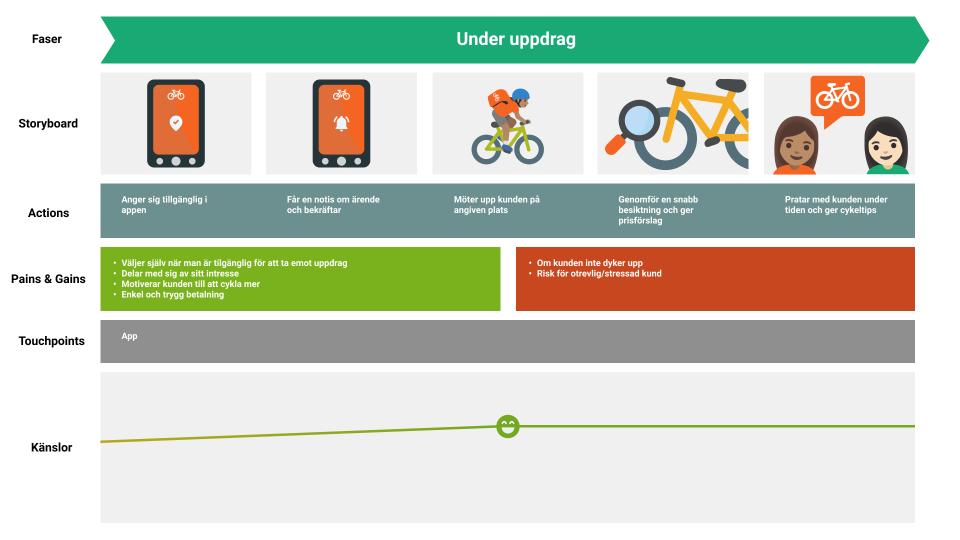
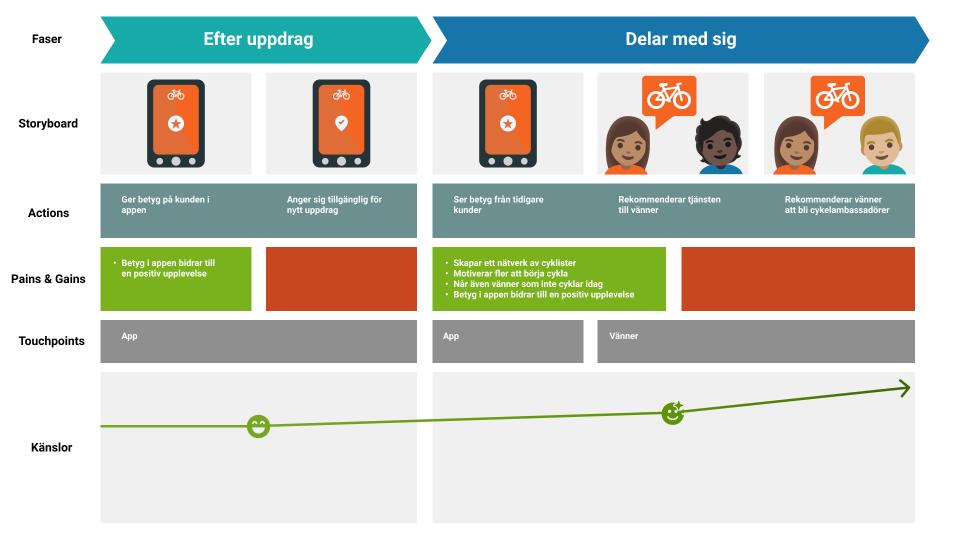
Application prototype
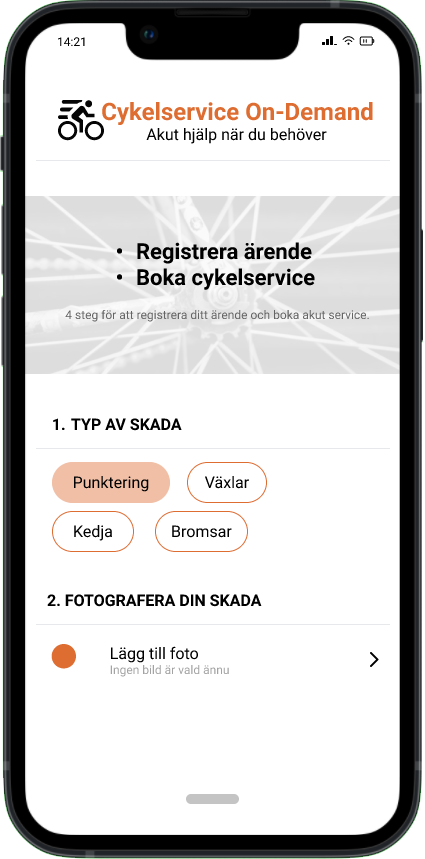
Step 1. Register your case.
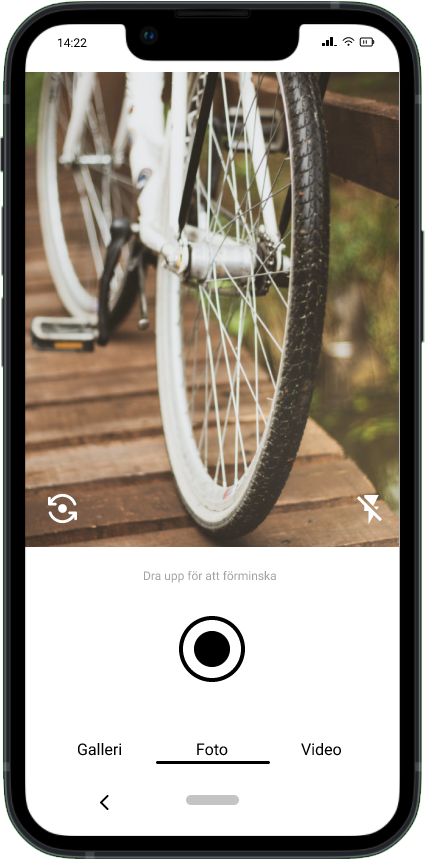
Step 2. Photograph the damage on your bike.
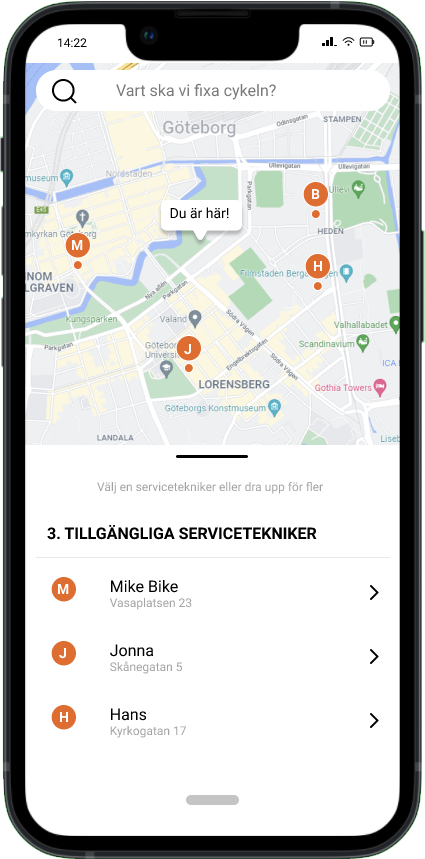
Step 3. See who is available.
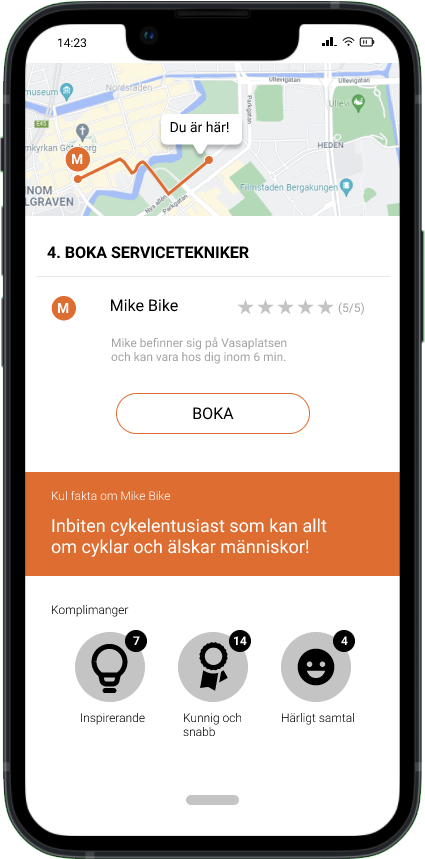
Step 4. Get some more information about the technician and reserve the service.
Service roadmap
To be able to target this concept, we developed a service roadmap – a customer service plan and how it will evolve over time.
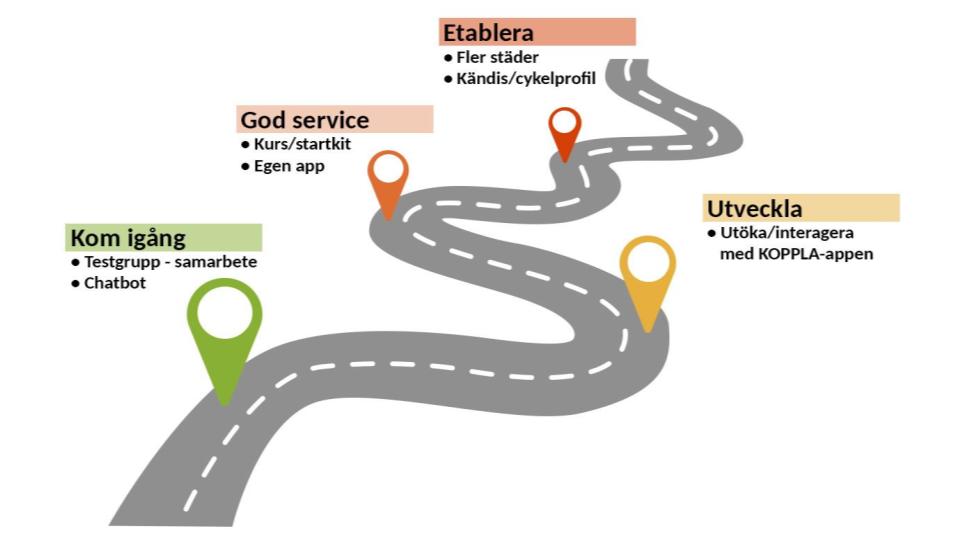
Conclusion
We started our research by sending out questionnaires to investigate cyclists on a very broad level. This gave us a lot of sprawling information. It would have been better to start collecting qualitative data, a few interviews, to narrow down the field and then follow up with surveys to explore findings during the conversations.
We had a very narrow target group to work with, which made it difficult to know where to find the right people to ask and interview.
The spontaneous street interviews with people in the city were challenging. It takes a lot of courage to break into people’s attention. Unlike interviewing people in a particular place or situation, most of them are on their way somewhere and you do not share the same context.
Due to the short time frame of this project (7 weeks), the design process went very fast. This was also a combination of lectures in UX Design methods and practical exercises.
This project has really complemented my skills with methods and insights of the ux process for my future service design projects.
